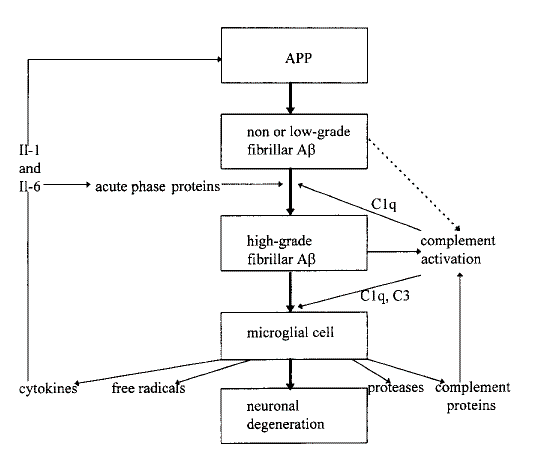
| Overview Topics |

| Class | Type | Molecular Weight | Typical Plasma Conc mu gm/ml |
| C1 | C1q | 400 kD | 70 |
| C1 | C1r | 190 kD | 34 |
| C1 | C1s | 87 kD | 31 |
| C1-Inh | 105 kD | 180 | |
| MAC | C3 | 185 kD | 1300 |
| MAC | C5 | 191 kD | 70 |
| MAC | C6 | 120 kD | 64 |
| MAC | C7 | 110 kD | 56 |
| MAC | C8 | 151 kD | 55 |
| MAC | C9 | 71 kD | 59 |
| C1q Concentration | A-Beta Concentration for observed effect muM |
| 1 mu M | 115 mu M |
| 8 nM | 0.8 mu M |